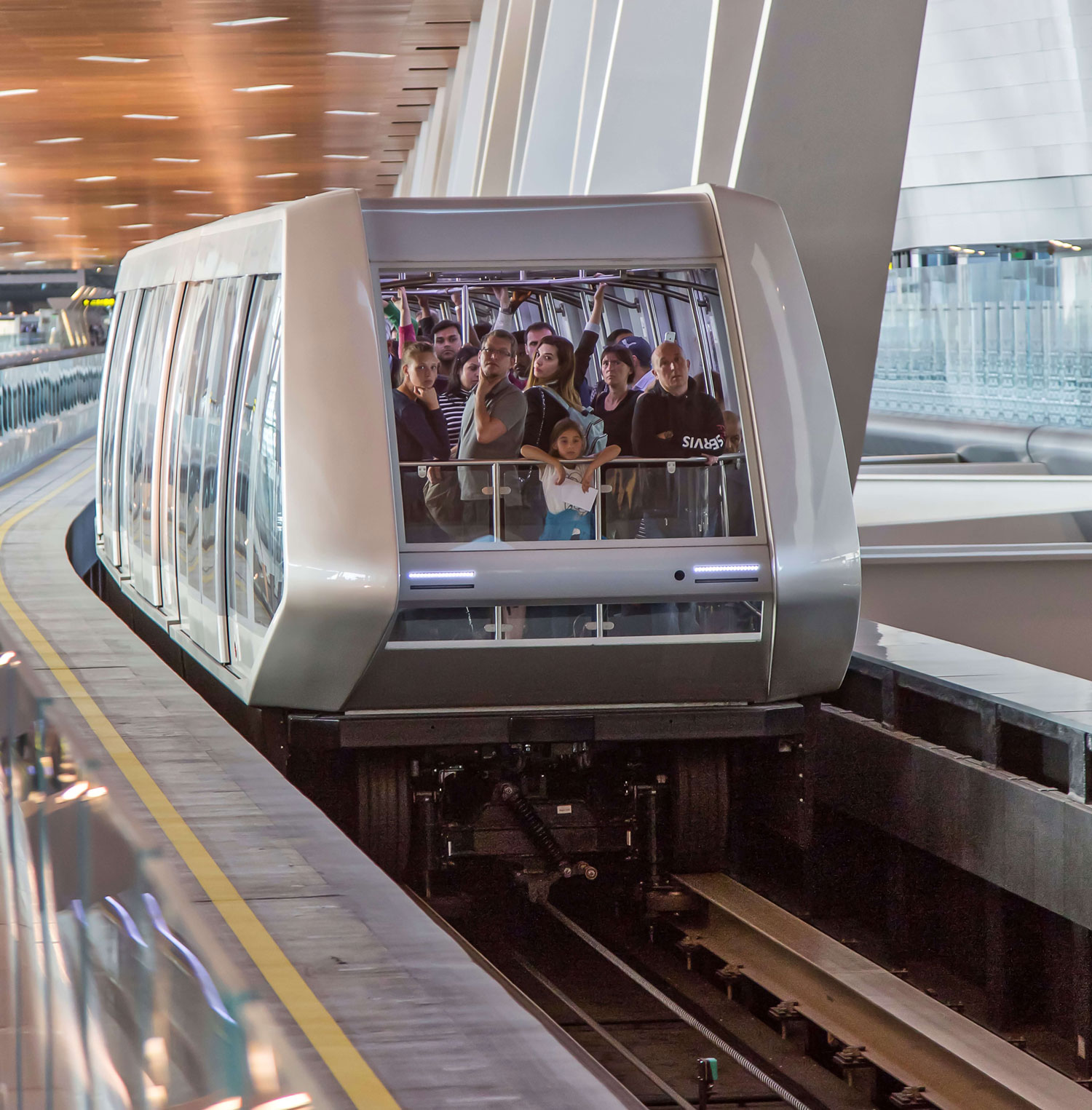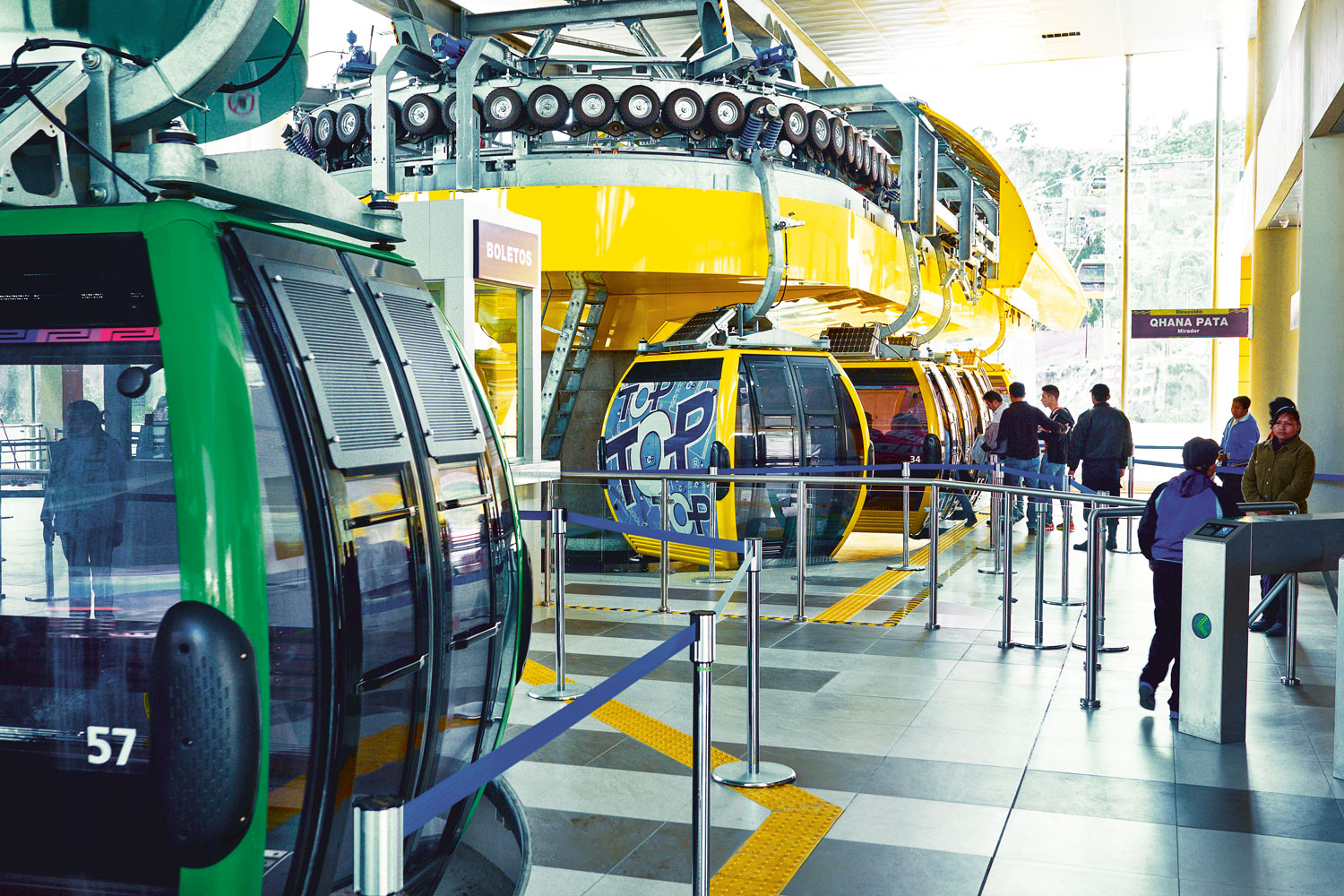
Cities, SI Urban 1/2020
Urban vehicles
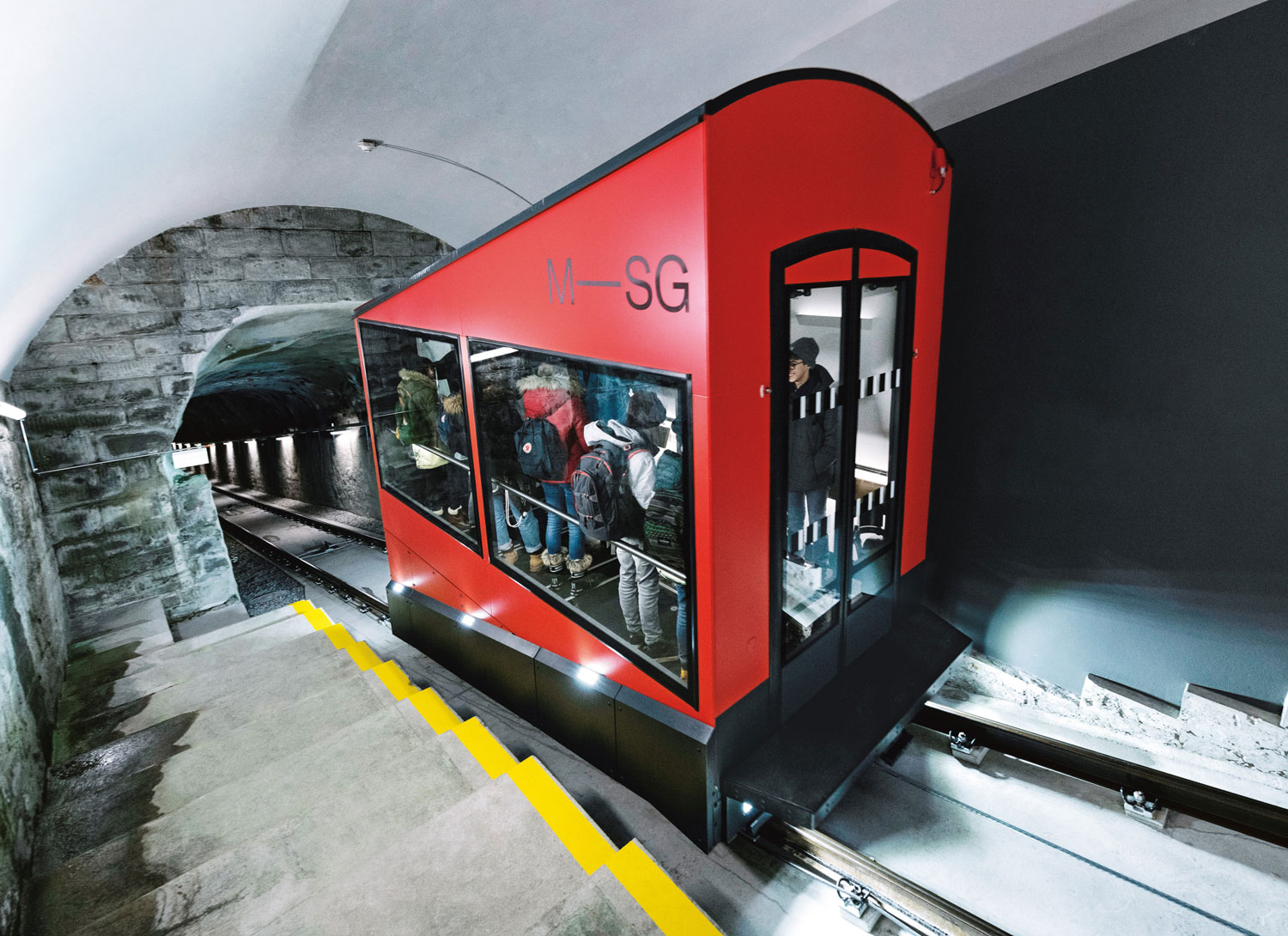
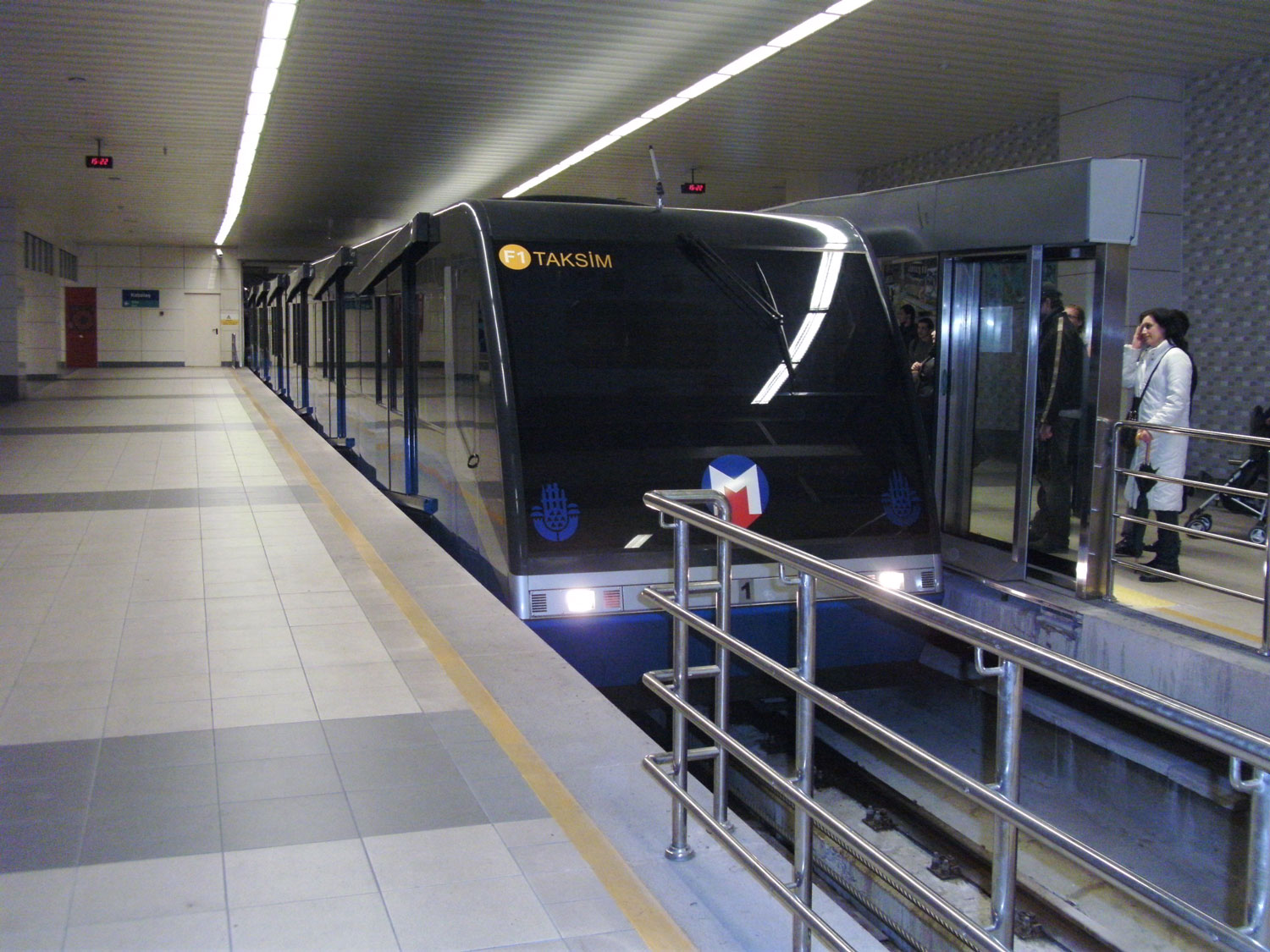
Funicular railways
are rail-bound transport systems that are operated by means of one or more cables. Funicular railways generally travel over short distances with a considerable height difference.
Among others, the DOPPELMAYR/GARAVENTA group has constructed a tunnel funicular in Istanbul with a CWA carriage from the Bosporus port of Kabataş to the metro, bus and tram hub of Taksim, high above sea level. Other examples: the Mühleggbahn in St Gallen (left), the Red Bridge in Luxembourg (right).
3S cable cars
are large-gondola circulating tracks with a substantial transport capacity. With 18 CWA gondolas, for example, the cable car in Koblenz achieves a transport capacity of 3,800 people per hour and direction. Today, the cable car is a permanent part of the city network.
The large glass panes of the new CWA 3S ATRIA gondola make it ideally suited as a panorama gondola for POI provisions. This makes the transit a special experience for passengers.
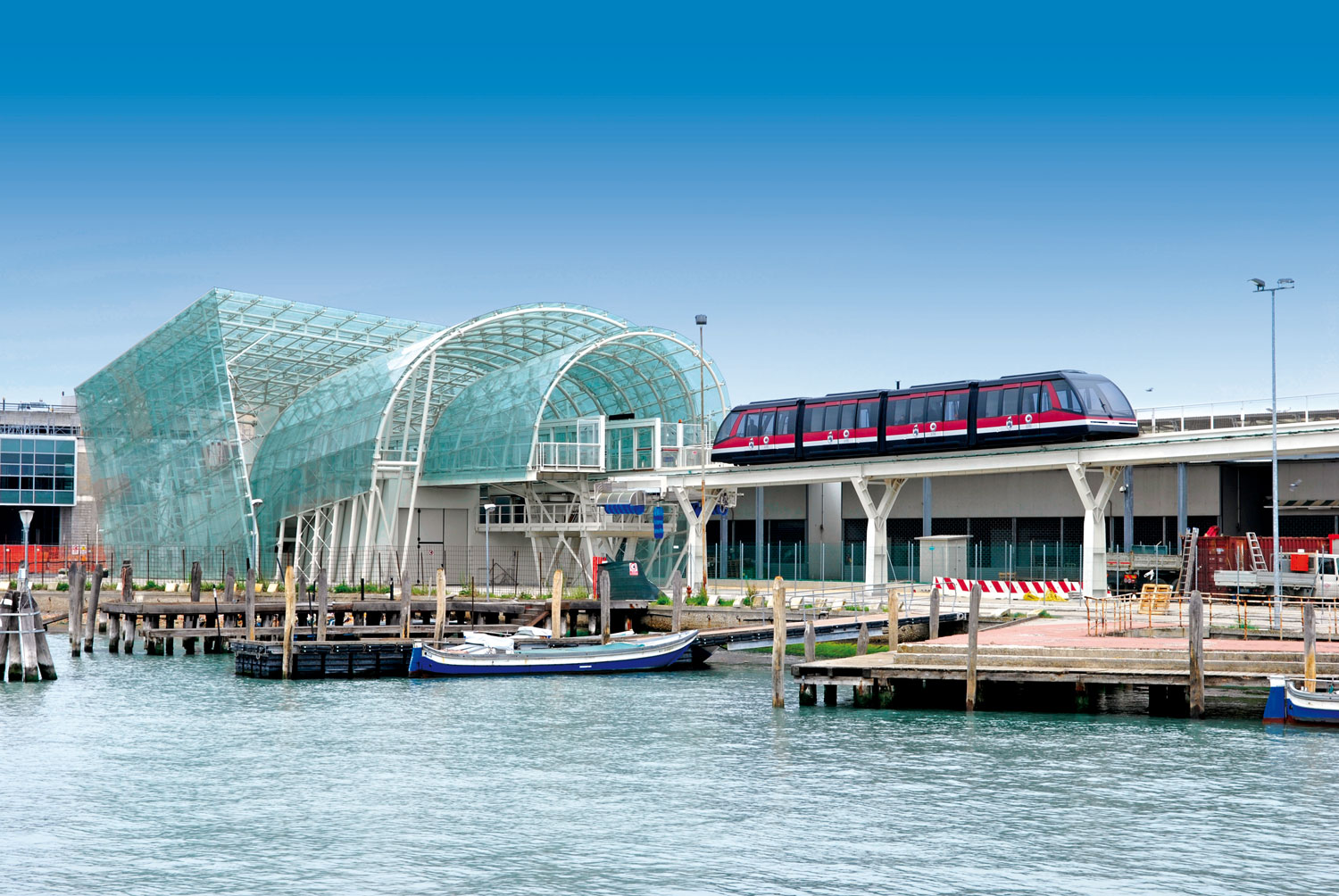
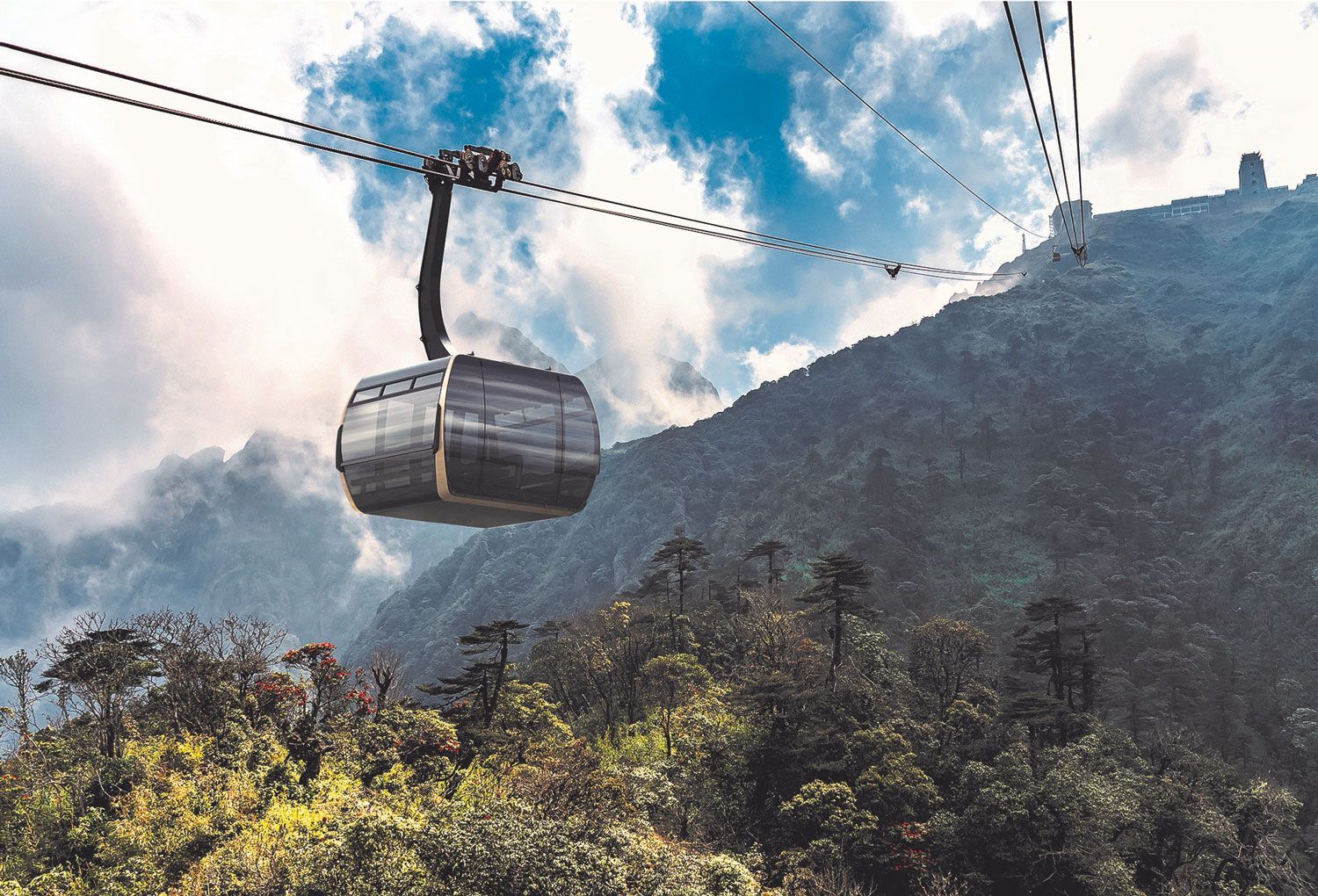
Cable Liner
are rail-bound, cable-drawn systems that generally function as shuttles. The vehicles here travel back and forth between the two terminal stations and are therefore particularly suitable for fast and safe passenger transport in the urban area.
The CWA shuttle vehicles are used all over the world, owing their high level of travel comfort. Among other places, the versatile systems are used in the casino city of Las Vegas – MGM City Center (USA) (left), in Venice (centre) as a shuttle to the centre, and at Doha International Airport in Qatar (right).
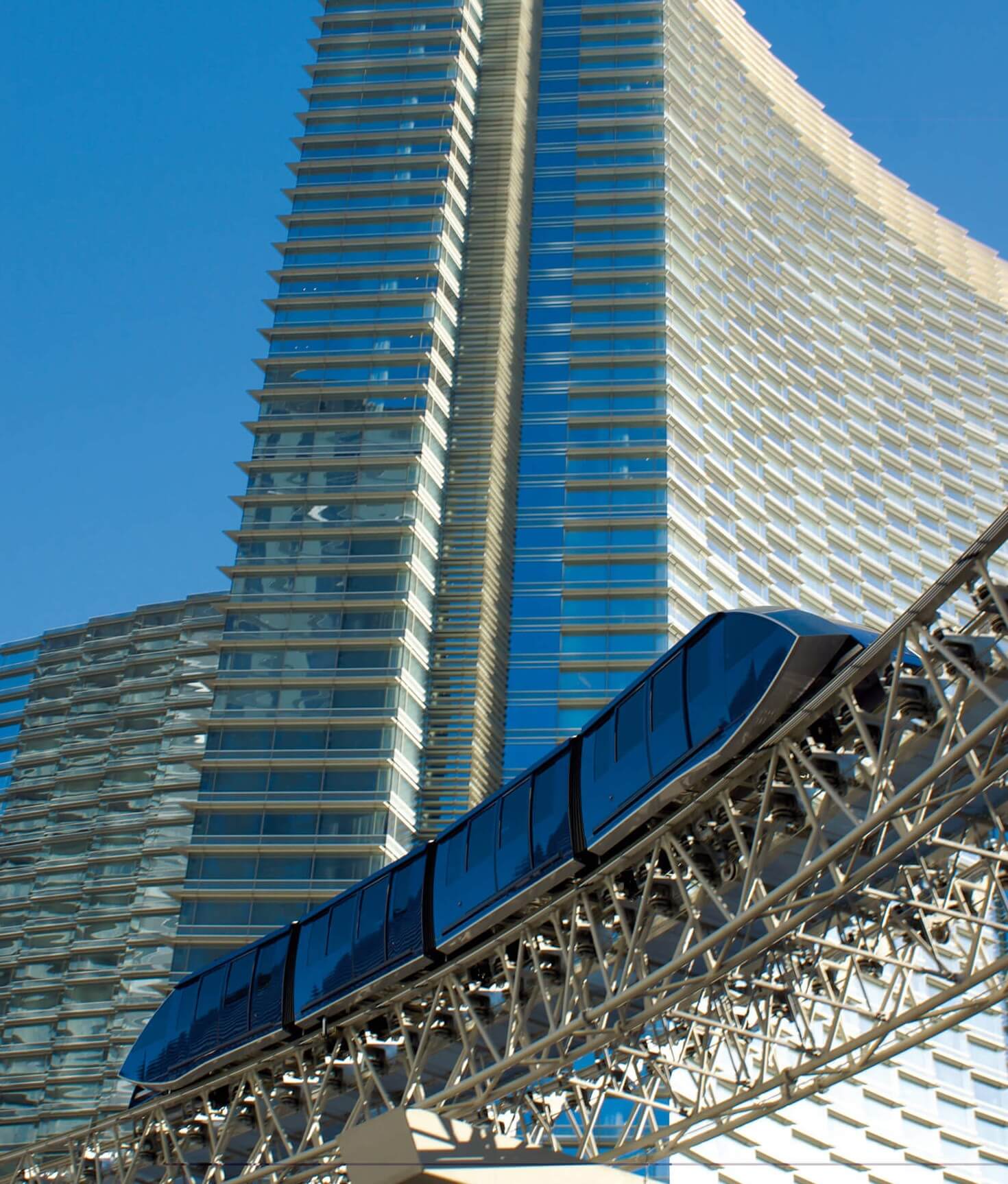
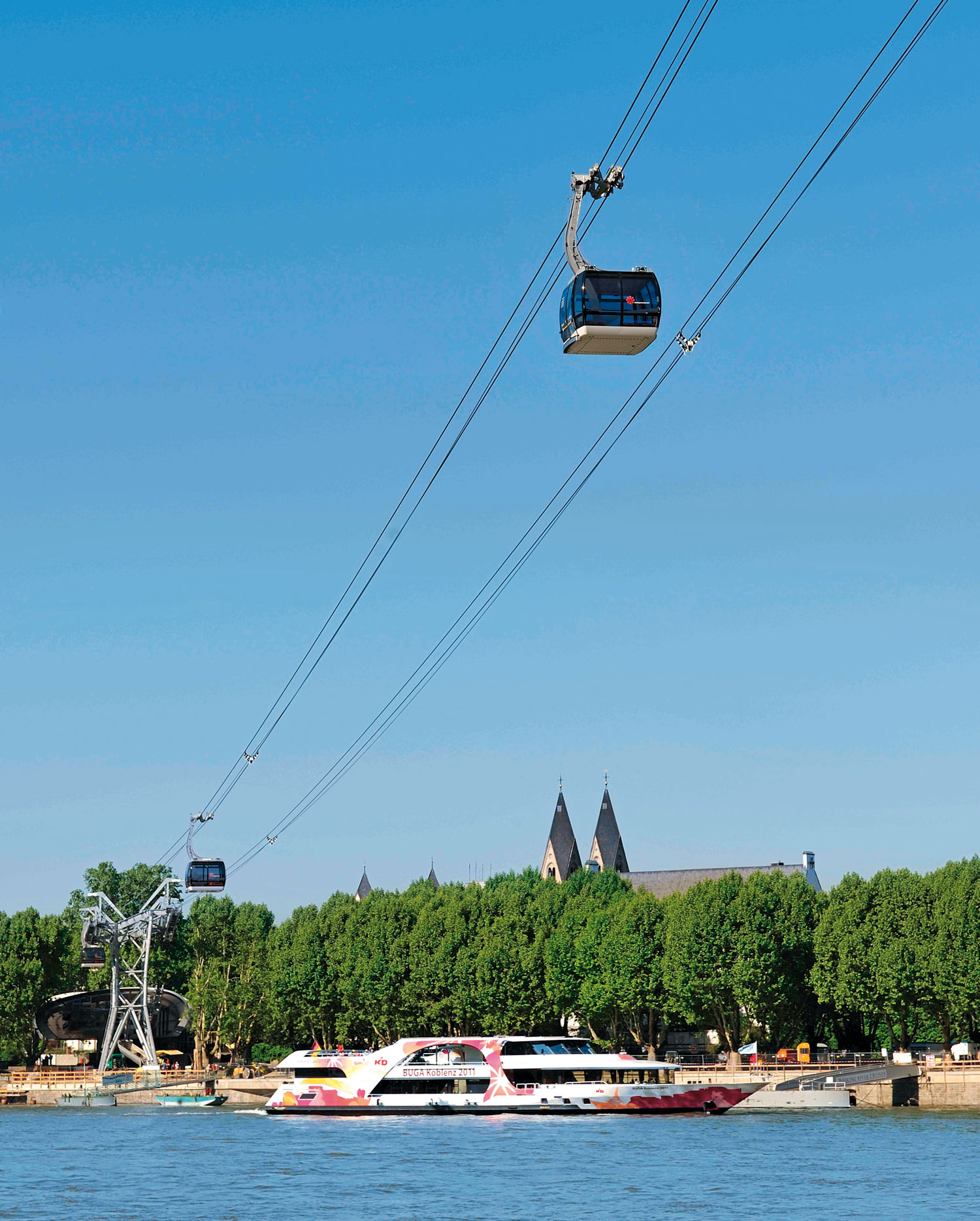
The world largest urban cable car network: 10-MGD mi telefrico
Since2014,theBoliviancitiesofLaPaz and El Alto have been model cities, usingcablecarsasanurbanmodeof transport. In 2019, the tenth and final line – Línea Plateada (silver) – of the largest cable car order in the history of company DOPPELMAYR/GARAVENTA was opened.
This completes the network circle, which very conveniently connects the two cities La Paz and El Alto. The cable car network in the South American metropolises has a total length of around 33 kilometres. Since the opening of the first cable car in May 2014, almost 200 million passengers had been transported by March 2019.
Around 300,000 people use Mi Teleférico every day – on the way to work, the shops, school orleisure.Thecablecarnetworkin Bolivia is the reference example when itcomestouseofcablecarsforpublic transport in an urban area.
Yet, the cable-drawn systems are also used in other cities all over the world: in Koblenz, a system was installed as part of the 2011 National Garden Show; in Luxembourg, a system facilitates connection to the local public transport; and the Hom Thom cable car in Vietnam even connects two islands. These versatile systems can be tailored perfectly to the respective cities and therefore blend harmoniously into the urban environment.
